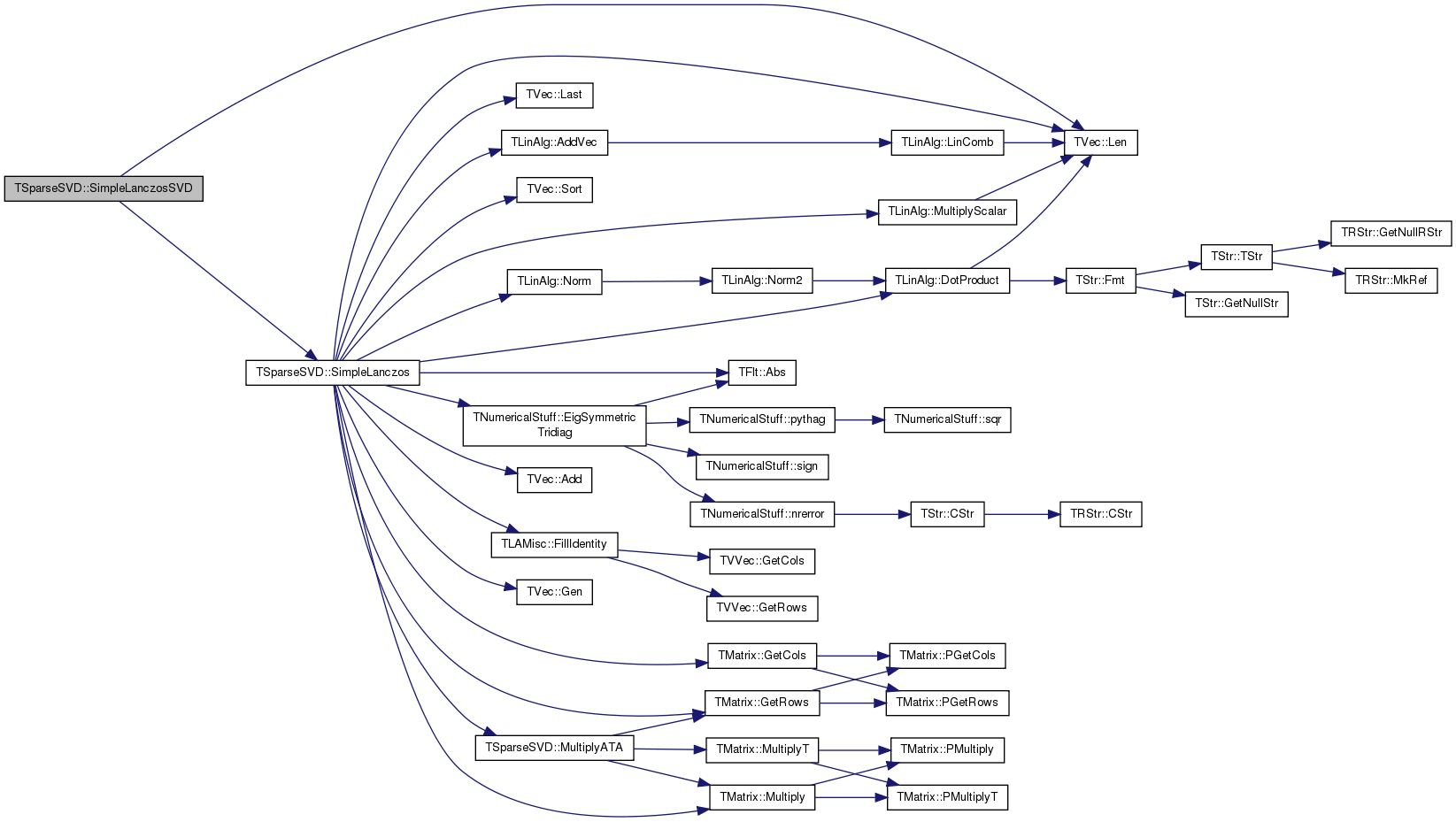|
SNAP Library 2.4, Developer Reference
2015-05-11 19:40:56
SNAP, a general purpose, high performance system for analysis and manipulation of large networks
|
|
SNAP Library 2.4, Developer Reference
2015-05-11 19:40:56
SNAP, a general purpose, high performance system for analysis and manipulation of large networks
|
#include <linalg.h>
Static Public Member Functions | |
| static void | SimpleLanczos (const TMatrix &Matrix, const int &NumEig, TFltV &EigValV, const bool &DoLocalReortoP=false, const bool &SvdMatrixProductP=false) |
| static void | Lanczos (const TMatrix &Matrix, int NumEig, int Iters, const TSpSVDReOrtoType &ReOrtoType, TFltV &EigValV, TFltVV &EigVecVV, const bool &SvdMatrixProductP=false) |
| static void | Lanczos2 (const TMatrix &Matrix, int MaxNumEig, int MaxSecs, const TSpSVDReOrtoType &ReOrtoType, TFltV &EigValV, TFltVV &EigVecVV, const bool &SvdMatrixProductP=false) |
| static void | SimpleLanczosSVD (const TMatrix &Matrix, const int &CalcSV, TFltV &SngValV, const bool &DoLocalReortoP=false) |
| static void | LanczosSVD (const TMatrix &Matrix, int NumSV, int Iters, const TSpSVDReOrtoType &ReOrtoType, TFltV &SgnValV, TFltVV &LeftSgnVecVV, TFltVV &RightSgnVecVV) |
| static void | OrtoIterSVD (const TMatrix &Matrix, int NumSV, int IterN, TFltV &SgnValV) |
| static void | Project (const TIntFltKdV &Vec, const TFltVV &U, TFltV &ProjVec) |
Static Private Member Functions | |
| static void | MultiplyATA (const TMatrix &Matrix, const TFltVV &Vec, int ColId, TFltV &Result) |
| static void | MultiplyATA (const TMatrix &Matrix, const TFltV &Vec, TFltV &Result) |
|
static |
Definition at line 1134 of file linalg.cpp.
References TFlt::Abs(), TVec< TVal, TSizeTy >::Add(), TLinAlg::AddVec(), TLinAlg::DotProduct(), TNumericalStuff::EigSymmetricTridiag(), TStr::Fmt(), TVVec< TVal >::Gen(), TMatrix::GetCols(), TInt::GetMn(), TFlt::GetMx(), TMatrix::GetRows(), IAssert, IAssertR, TMatrix::Multiply(), TLinAlg::Multiply(), MultiplyATA(), TLinAlg::Norm(), TVec< TVal, TSizeTy >::Reserve(), TVec< TVal, TSizeTy >::Sort(), ssotFull, and ssotSelective.
Referenced by TSnap::GetEigVals(), TSnap::GetEigVec(), and LanczosSVD().
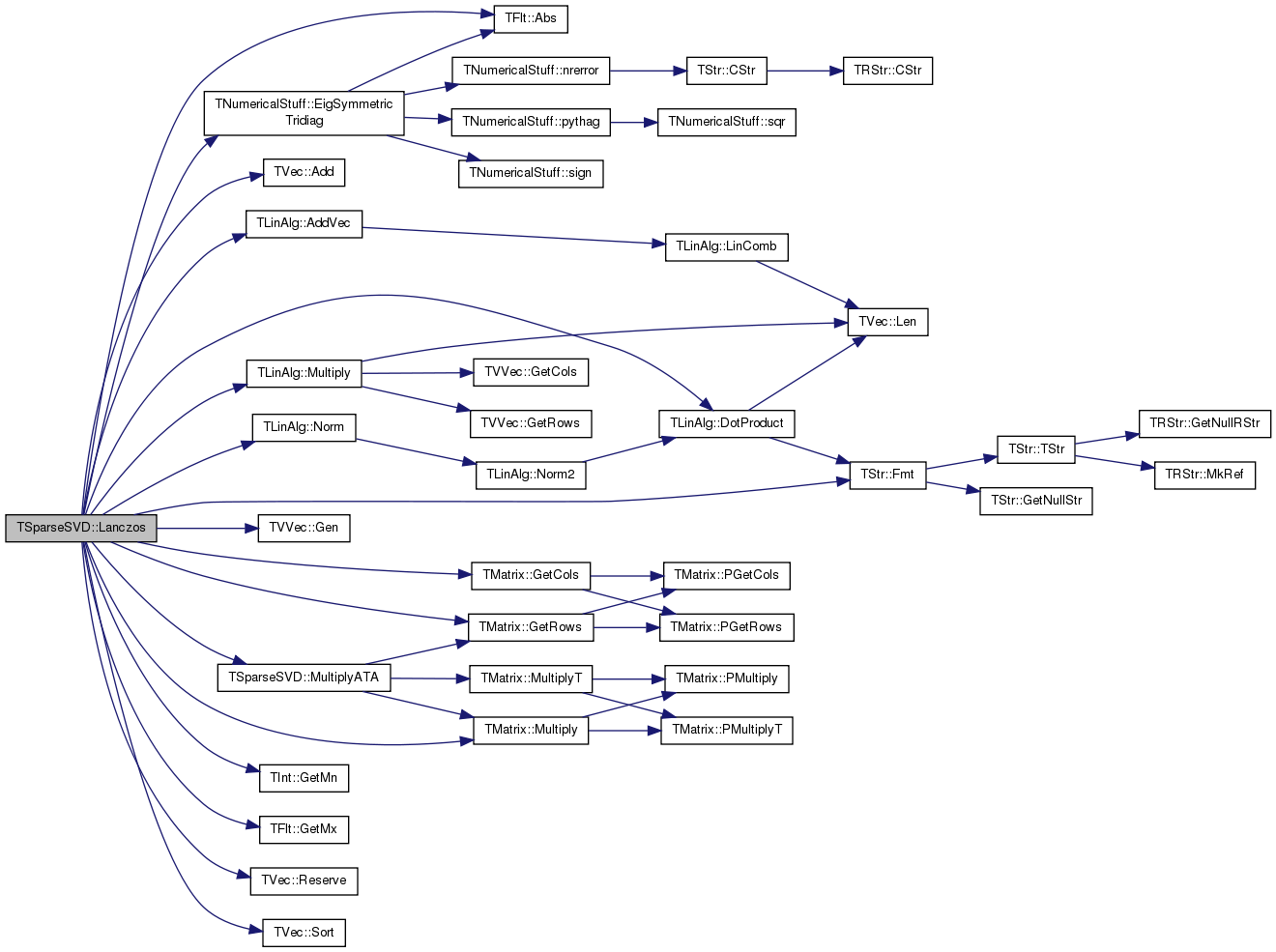

|
static |
Definition at line 1290 of file linalg.cpp.
References TFlt::Abs(), TVec< TVal, TSizeTy >::Add(), TLinAlg::AddVec(), TLinAlg::DotProduct(), TNumericalStuff::EigSymmetricTridiag(), TVVec< TVal >::Gen(), TMatrix::GetCols(), TFlt::GetMx(), TMatrix::GetRows(), TExeTm::GetSecs(), TExeTm::GetStr(), IAssert, TMatrix::Multiply(), TLinAlg::Multiply(), MultiplyATA(), TLinAlg::Norm(), TVec< TVal, TSizeTy >::Reserve(), TVec< TVal, TSizeTy >::Sort(), ssotFull, and ssotSelective.
Referenced by TSnap::GetInvParticipRat().
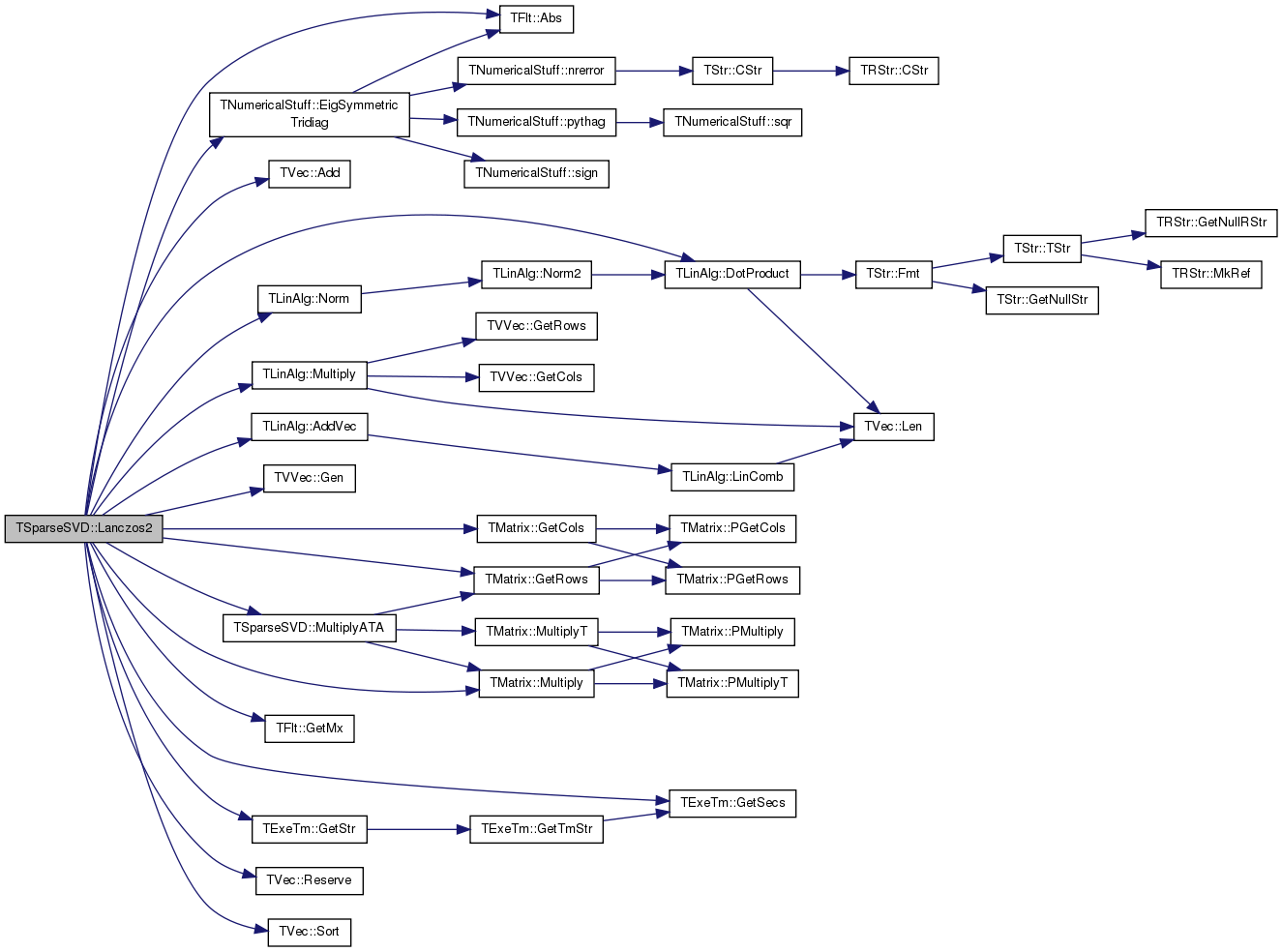

|
static |
Definition at line 1454 of file linalg.cpp.
References TVVec< TVal >::Gen(), TMatrix::GetRows(), Lanczos(), TVec< TVal, TSizeTy >::Len(), and TMatrix::Multiply().
Referenced by TSnap::GetSngVals(), and TSnap::GetSngVec().
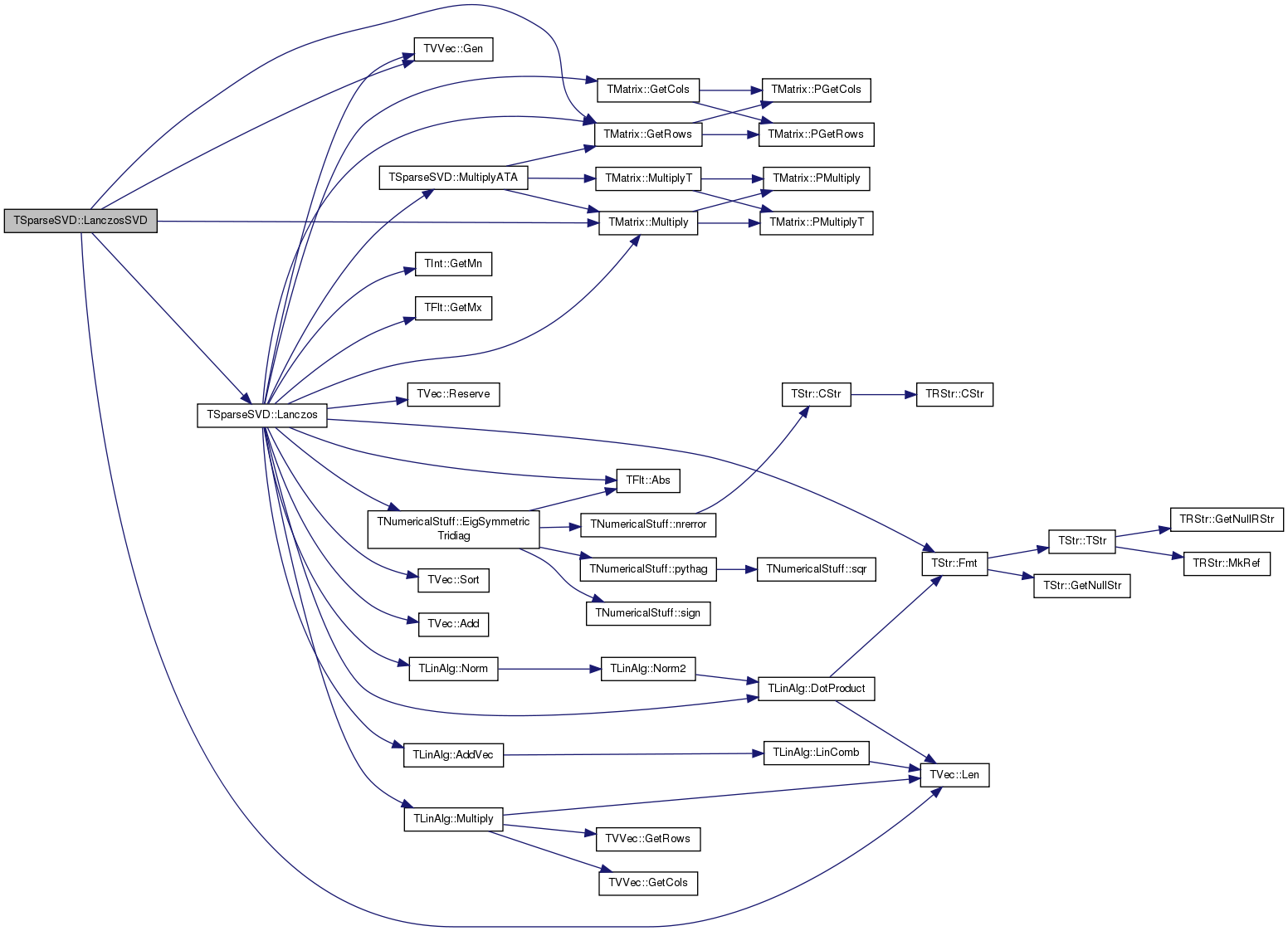
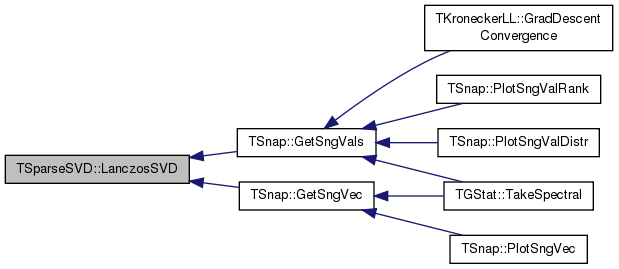
|
staticprivate |
Definition at line 1003 of file linalg.cpp.
References TMatrix::GetRows(), TMatrix::Multiply(), and TMatrix::MultiplyT().
Referenced by Lanczos(), Lanczos2(), OrtoIterSVD(), and SimpleLanczos().
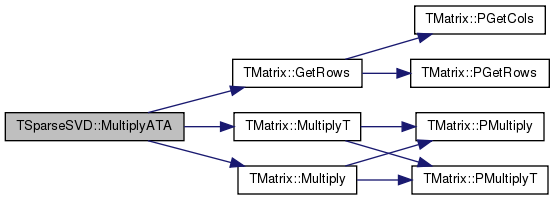

|
staticprivate |
Definition at line 1012 of file linalg.cpp.
References TMatrix::GetRows(), TMatrix::Multiply(), and TMatrix::MultiplyT().
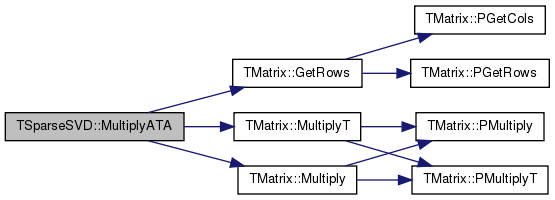
|
static |
Definition at line 1021 of file linalg.cpp.
References TVec< TVal, TSizeTy >::Add(), TMatrix::GetCols(), TRnd::GetUniDev(), TLinAlg::GS(), MultiplyATA(), TLinAlg::Norm(), and TVec< TVal, TSizeTy >::Reserve().

|
static |
Definition at line 1476 of file linalg.cpp.
References TVec< TVal, TSizeTy >::Add(), TVec< TVal, TSizeTy >::Gen(), TVVec< TVal >::GetCols(), and TVec< TVal, TSizeTy >::Len().
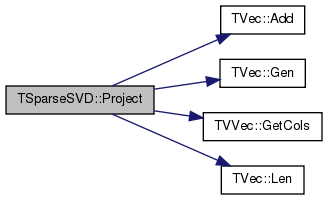
|
static |
Definition at line 1053 of file linalg.cpp.
References TFlt::Abs(), TVec< TVal, TSizeTy >::Add(), TLinAlg::AddVec(), TLinAlg::DotProduct(), TNumericalStuff::EigSymmetricTridiag(), TLAMisc::FillIdentity(), TVec< TVal, TSizeTy >::Gen(), TMatrix::GetCols(), TMatrix::GetRows(), IAssert, TVec< TVal, TSizeTy >::Last(), TVec< TVal, TSizeTy >::Len(), TMatrix::Multiply(), MultiplyATA(), TLinAlg::MultiplyScalar(), TLinAlg::Norm(), and TVec< TVal, TSizeTy >::Sort().
Referenced by TSnap::GetEigVals(), and SimpleLanczosSVD().
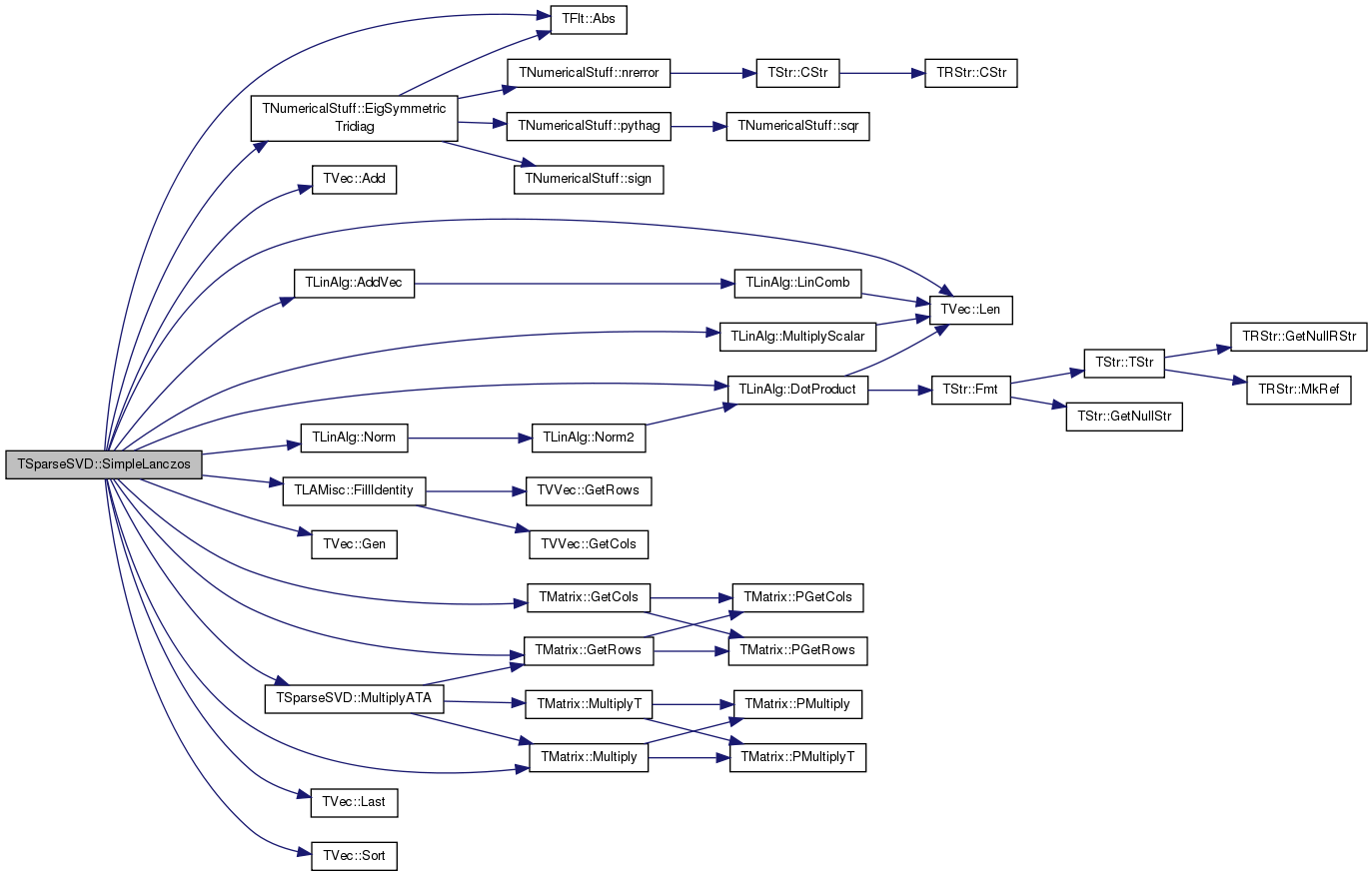

|
static |
Definition at line 1440 of file linalg.cpp.
References TVec< TVal, TSizeTy >::Len(), and SimpleLanczos().
Referenced by TSnap::GetSngVals().
